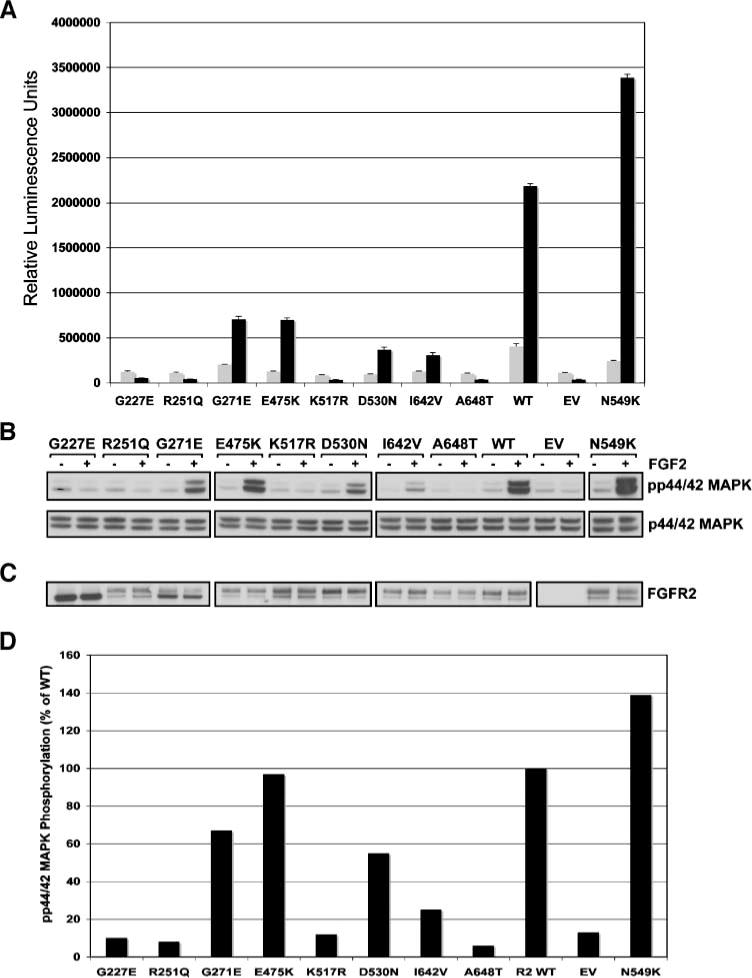FIGURE 6.

Cell proliferation in response to FGF2 in BaF3 cell lines stably transduced with wild-type and mutant FGFR2_I RES_Neo expression constructs. A. All novel mutations identified in melanoma result in a decrease in BaF3 proliferation when compared with wild-type FGFR2. Gray columns, basal proliferation in the absence of ligand; black columns, proliferation in response to 1 nmol/L FGF2. Columns, average of at least two independent experiments assayed in triplicate. B. Analysis of phospho-p44/42 MAPK on stimulation with exogenous rFGF2 shows that, with the exception of the N549K positive control, mutations impair the ability of the receptor to activate this pro-proliferation pathway compared with wild-type receptor. C. Western blot showing equal expression of FGFR2 by all mutants except empty vector in the absence (−) and presence (+) of FGF2. D. Graphical representation of p44/42 MAPK phosphorylation expressed as a percentage of phosphorylation (on ligand stimulation) of that of wild-type receptor.
